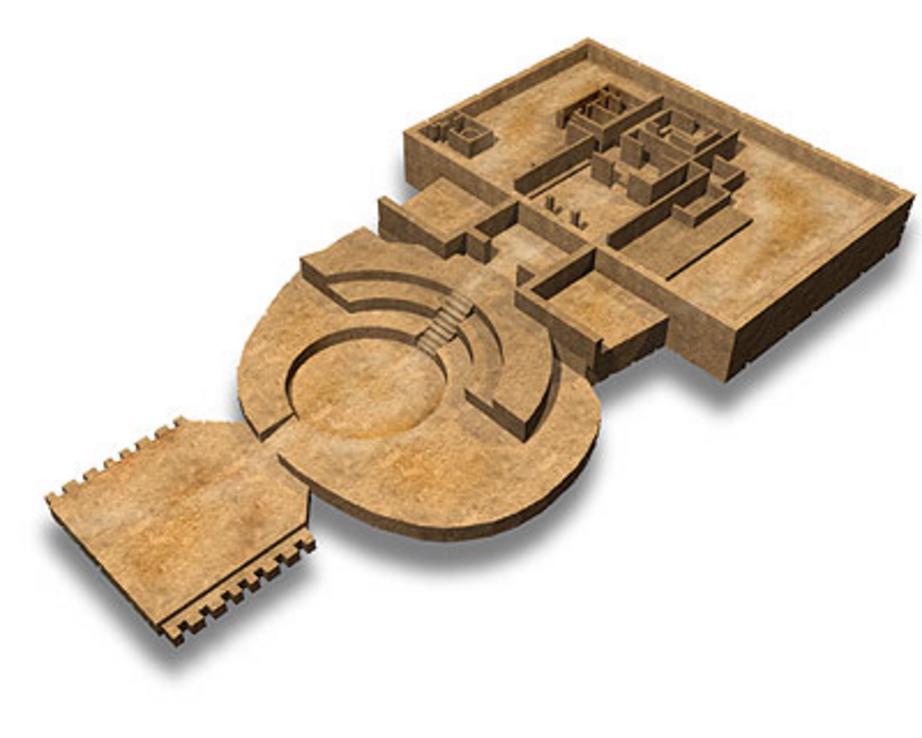The Norte Chico civilization: ancient Peruvian civilization or complex society
The Norte Chico Civilization was an ancient civilization / complex society belonging to the Pre-Columbian era. This civilization flourished in Peru about 5000 years ago, and hence has been considered to be the oldest known civilization to have existed in the Americas. The Norte Chico Civilization is notable today for its monumental constructions, including massive ceremonial pyramids and complex irrigation systems. This ancient civilization lasted until around 1800 BC, after which the settlements were abandoned.
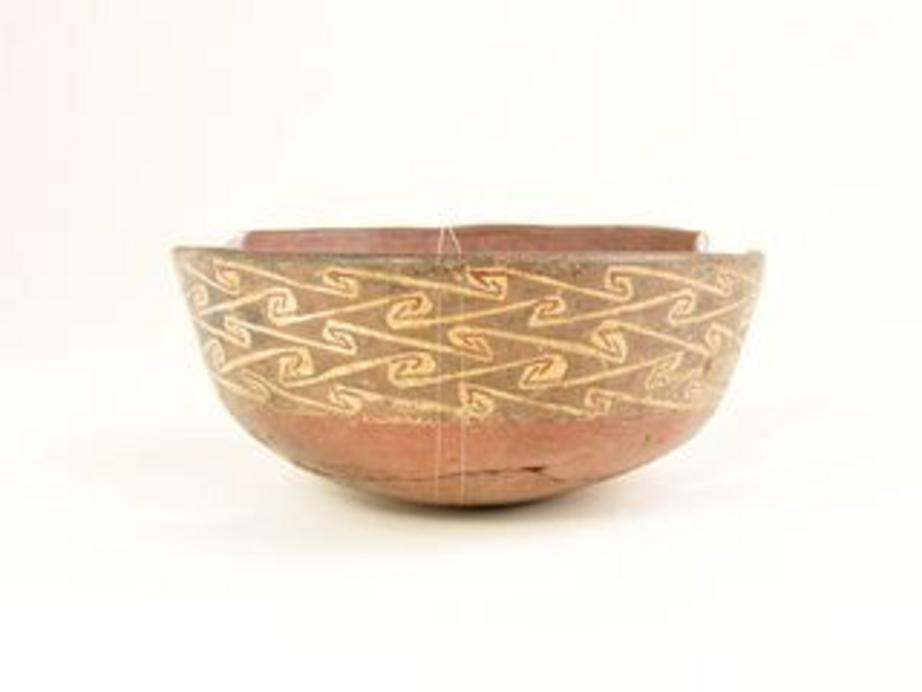
Location of Norte Chico Civilization Sites
The sites of the Norte Chico Civilization are situated around 200 km (124.27 miles) to the north of Lima, in what is today the Norte Chico region of north-central coastal Peru, near Supe, Barranca province. This civilization is known also as the Caral / Caral-Supe Civilization, as its best-studied site is Caral in the Supe Valley. Based on radiocarbon dating, it has been suggested that the formative period of the Norte Chico Civilization was sometime during the 4th millennium BC. The civilization’s greatest period of expansion, however, belongs to the 3rd millennium BC.
The dating of the Norte Chico Civilization shows that these inland sites were developing around the same time as their coastal neighbors. This is important, as it challenges the conventional view that all early civilizations in Peru and the rest of South America began by the sea as coastal settlements. However, a close inter-dependent relationship between the peoples of the coast and the Norte Chico Civilization existed. Trade is believed to have been based on fish from the coast being exchanged for cotton (for the production of fishing nets) from the interior.
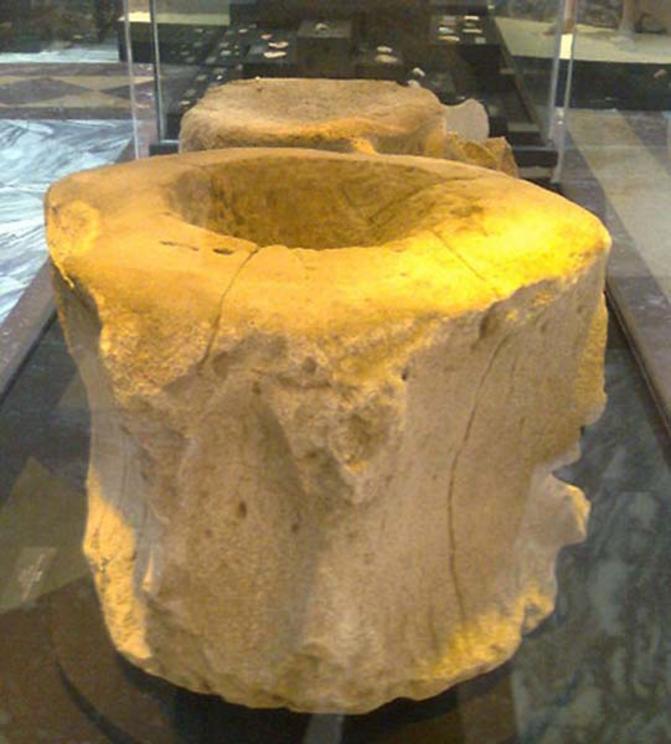 The people of the Norte-Chico civilization used blue whale vertebrae as stools.
The people of the Norte-Chico civilization used blue whale vertebrae as stools.
The Norte Chico Civilization’s Monumental Architecture
The complexity of the Norte Chico Civilization may be seen in the monumental works that they left behind. The most conspicuous of these are their ceremonial pyramids (sometimes referred to as platform mounds). These pyramids, which are terraced, are rectangular in shape, and were built of stone. In Caral, a total of six pyramids have been discovered, the largest of which is the ‘Pirámide Mayor’.
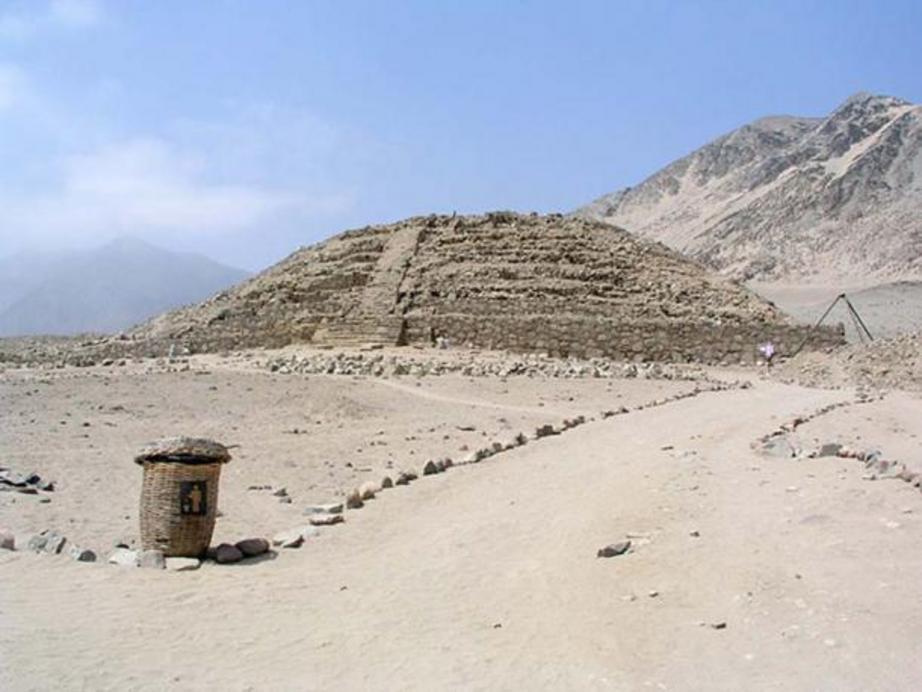 Pyramid at Caral, Supe Valley, Peru. The complexity of the Norte Chico Civilization may be seen in the monumental works that they left behind, especially their ceremonial pyramids.
Pyramid at Caral, Supe Valley, Peru. The complexity of the Norte Chico Civilization may be seen in the monumental works that they left behind, especially their ceremonial pyramids.
It has been postulated that the pyramids were built by stuffing stone-filled reed bags against a retaining wall. This process was repeated until the desired pyramid was formed. In addition, irrigation canals were also constructed by the Norte Chico Civilization, which allowed them to develop their agriculture. It has been remarked that all the monumental architecture of this civilization are situated close to irrigation canals, thus indicating their significance.
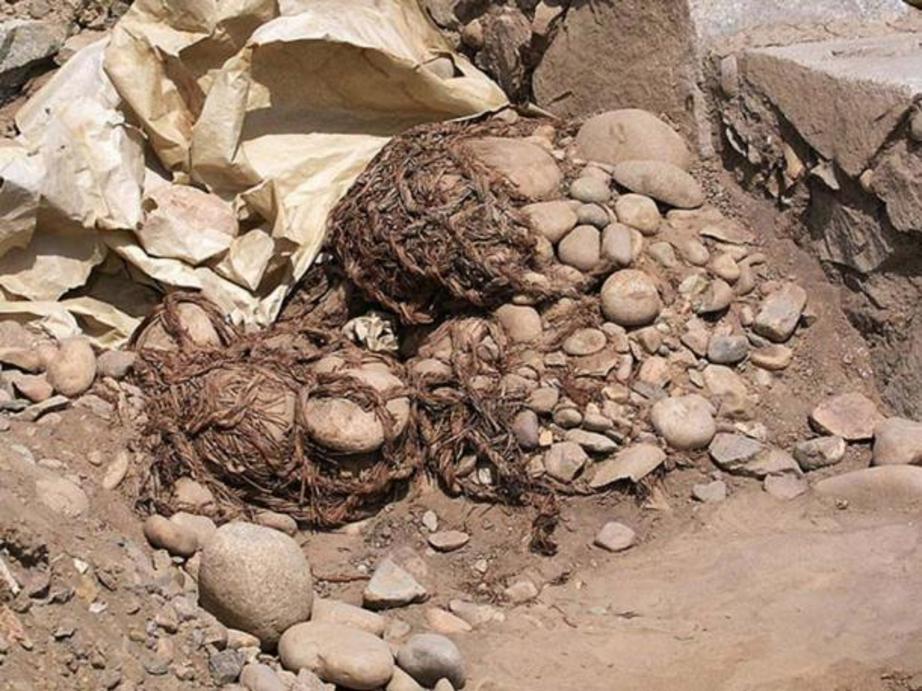 Reed "shicra-bags", like this one found at Caral, were filled with stones and used for construction by the Norte Chico Civilization.
Reed "shicra-bags", like this one found at Caral, were filled with stones and used for construction by the Norte Chico Civilization.
Ancient Civilization or Complex Society?
Whilst there is evidence that the Norte Chico Civilization were building great monuments, there seems to be a dearth of evidence for other aspects that would qualify a society as a ‘civilizations’. For example, there is very little evidence for artistic expression in the Norte Chico Civilization. One possible explanation for this is that the artworks have not survived in the archaeological material, as they may have been made on perishable material.
Another criterion for a ‘civilization’ is urbanization, and archaeologists are not entirely certain if he Norte Chico Civilization sites may be called ‘urban’. Therefore, some prefer to use the term ‘complex society’ rather than ‘civilization’ when referring to the Norte Chico.
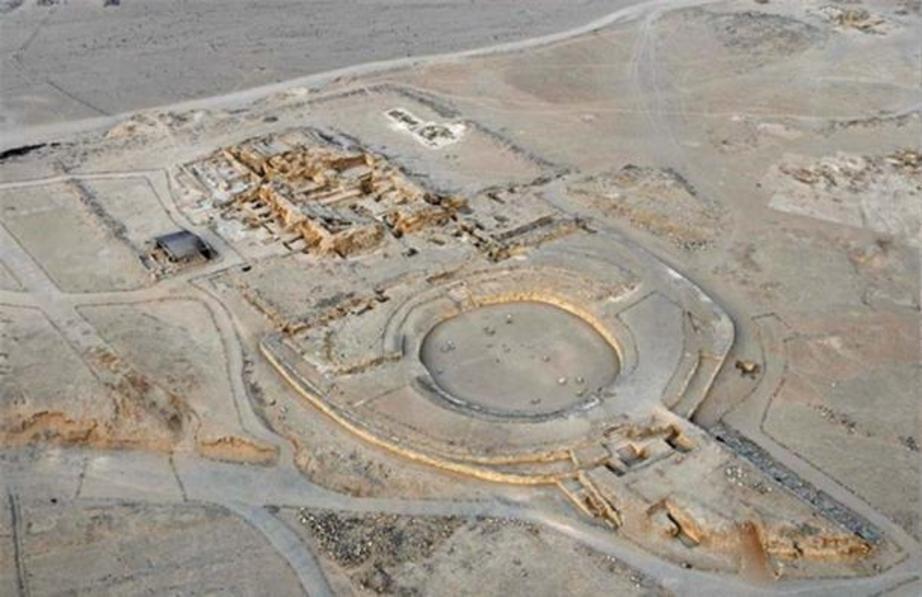 Aerial photo of the ‘Caral Amphitheater.’ There is debate whether the Norte Chico Civilization is ‘urban’ enough to be called a civilization, or if it should be called a complex society instead.
Aerial photo of the ‘Caral Amphitheater.’ There is debate whether the Norte Chico Civilization is ‘urban’ enough to be called a civilization, or if it should be called a complex society instead.
An Ancient Civilization Without Pottery
Another interesting aspect about the Norte Chico Civilization is that there is no evidence to indicate that they were in possession of pottery technology. This is rather odd, when one considers that human societies usually acquire ceramic-making skills before going on to build monumental constructions. Instead of pots, the people of the Norte Chico Civilization seem to have used gourds instead. These vessels would have allowed storage. Nevertheless, another important function of pots, i.e. as cooking vessels, could not be replicated by these gourds. On some of the gourds, a figure, perhaps that representing a deity, have been found. At the moment, these are the few known examples of possible Norte Chico art. In addition, if these figures represent a divine being, it would also indicate that the civilization had some kind of religious belief system.
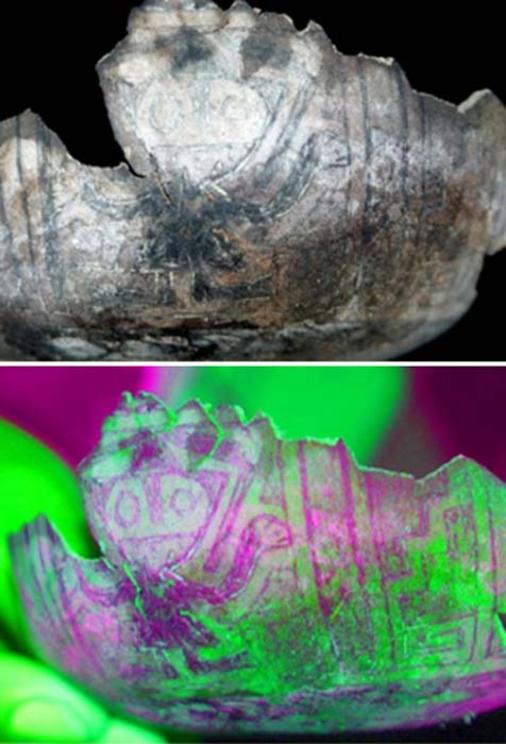 Top: Gourd painted with a god figure. Bottom: color enhanced gourd painted with a god figure.
Top: Gourd painted with a god figure. Bottom: color enhanced gourd painted with a god figure.
The archaeological evidence show that the settlements of the Norte Chico Civilization were abandoned after 1800 BC. Whilst it is not entirely clear as to why the abandonment took place, it has been speculated that the people of this civilization migrated to other parts of Peru and took their skills along with them.
For full references please use source link below.

